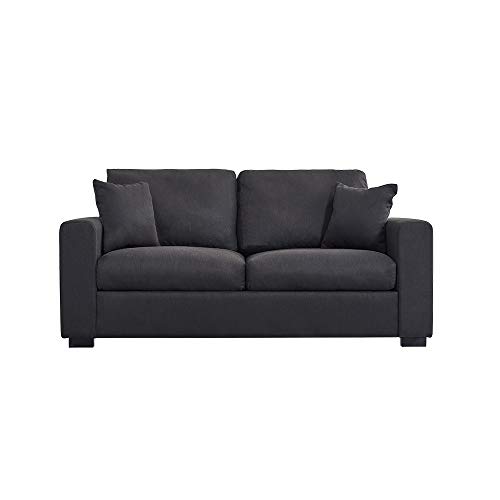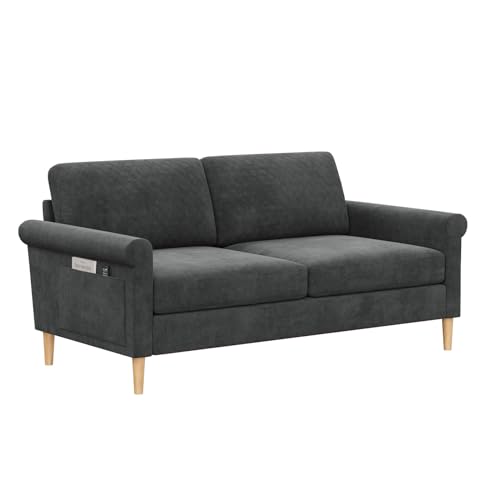Guide To 2 Seater Leather And Fabric Sofa: The Intermediate Guide For …
페이지 정보
작성자 Garry 작성일 24-12-23 10:07 조회 4 댓글 0본문
 Choosing Between a 2 seater leather and fabric sofa (Bookmarkspot published an article)
Choosing Between a 2 seater leather and fabric sofa (Bookmarkspot published an article)It isn't easy to decide between Fabric 2 seater sofas sale and leather when you are searching for a new sofa. This is especially true for those who don't have much furniture experience.
If you have kids or live in apartments, the leather option may be right for you. It's easy to wipe down and looks fantastic in a lot of homes.
Comfort
A sofa is the main focal point of most people's living spaces and is a major purchase. You want a sofa that can be sat on for a long time and looks stunning, and that will last the test of time. It isn't easy to decide between fabric 2 seater sofa and leather but you must consider your budget, lifestyle, and other priorities before making a choice.
Leather is a high-end material with a luxurious feel and radiates class in the home. It is tough and stain-resistant. It is also resistant to pets as well as children, and will last for a long time if properly cared for. However, it could be more expensive upfront and may require regular conditioning to avoid peeling or cracking.
2 seat fabric sofa sofas are available in a wide range of styles, colours and fabrics. They are more affordable than leather ones. They are also soft and more welcoming with the capacity to feel "broken in" right from the beginning. They are more prone to dust mites or hairs from pets and require more frequent cleaning. However, with new technology and high-performance fabrics, there are now hypoallergenic alternatives available.
The longevity of a fabric sofa will depend on the quality of the material However, the majority of fabrics can last for 15 years if they are properly taken care of. Regular vacuuming and deep cleaning will ensure that the fabric is free of stains, odours and dirt. Like leather, they are susceptible to sagging and flattening over time. Many fabric couches are treated with chemicals that make them stain-resistant and flame-resistant. These chemicals can release volatile organic compounds that could alter the quality of air in the indoor environment and cause allergies.
Durability
We usually choose sofas made of fabrics that are extremely robust, particularly if we have pets or children. You don't need to spend lots of money in the beginning if you're going to regret it after the very first smudge or claw. Similarly, you don't want to buy something that's cheap but isn't durable enough for regular use.
Leather, however is extremely tough and has a remarkable tear strength. It also lasts up to 4 times longer than fabric and it is naturally resistant to cracking, fading and flaking over time. It is also able to be conditioned to replenish its natural oils, and look as fresh as new.
Fabrics are a more affordable alternative and are available in a range of different colours patterns, patterns, and textures to fit any design. Fabrics are easy to maintain and can stand up to some wear and tear. However, they can fade over time and are more vulnerable to moisture.
Microfiber is durable and comes in a range of colors. However, it might not be as durable as genuine leather. It may also not be able of enduring scratches. But, it's an ideal choice for families because of its resilience to stains and spills and it is easy to clean typically with a damp cloth.
Suede is more difficult to clean and repair than leather. It is also prone to losing its shape if it is not regularly maintained and can feel very rough to the feel. It is also a thin material, so it might not be as durable as cowhide and sheepskin leather.
Allergens
The material your sofa is made of can have a big impact on your allergies, which is why it's crucial to know how different options hold up. Fabrics are known to hold allergens, such as dust mites and pet dander, which can cause symptoms such as hay fever, asthma, eczema and rhinitis. These fabrics are ideal for them to flourish.
The leather, however is not a reservoir of the allergens and offers a constant level of comfort, regardless of the season. However, it can be a trigger for dermatitis, especially for those with contact dermatitis and who are sensitive to the chemicals that are used in the tanning process. To prevent skin reactions, it is important to use vegetable-tanned products and keep a consistent skincare routine.
Leather and fabric sofas both have a high level of durability, however the type of fabric you choose will determine the degree to which it can last over time. A top-quality fabric will not suffer from fading or sagging and can be able to withstand spills body oils, spills and everyday use. Many modern couches come with stain resistant treatments to make cleaning easier.
While you might not be able to prevent an allergic reaction from the leather sofa, it can help to reduce allergens by having a lint roll nearby and regularly cleaning your living space. This will help to reduce the amount of pet hair, dirt and dust mites that accumulate on your sofa. If you're still experiencing issues with allergies, try replacing your sofa for a more hypoallergenic version. For instance, a sofa made from synthetic or vinyl is less likely to trap dust mites and pet dander, and will allow you to breathe easier.
Scratches
When purchasing a leather sofa, it is crucial to think about the amount of wear and tear you can anticipate from it. The length of time a sofa will last is contingent on the finish, colour and quality of the leather. You should also make sure it is durable to withstand spills or other accidents. This can be accomplished by choosing a couch with a solid wood frame and high density foam cushions.
Leather can be damaged by a variety of reasons such as stretching it, marking territory, or in the process of reliving tension. Scratches can be of various severity. They can range from minor surface scratches to deep cuts or punctures. Minor scratches can be fixed by using a conditioner for leather. This will restore the balance between moisture and oil in the leather and stop it from drying out or cracking. Deep cuts and scratches may require a different treatment, depending on the amount of damage.
If you have cats, it's an ideal idea to trim their nails on a regular basis to help to prevent scratching on your couch. You can also stop your cat's scratching habits by offering alternatives to scratching surfaces, like sisal rope or cardboard. Another option is to apply a pet-safe furniture polish which can be applied with a soft cloth to the affected area.
In addition to cleaning your leather couch regularly, it is also recommended to keep it out of direct sunlight and heat sources which can dry out the leather. This could cause it to crack and is often difficult to repair and usually requires reupholstery. Make use of a leather conditioner in order to keep the leather soft.
Smell
Leather couches are known to smell different from fabric. It's because it's porous and can absorb unwanted odors such as body odor, smoke or food easily. The good news is that odors usually fade over time, particularly if you make use of a fragrance-free, non-toxic and free cleaner.
If the smell is very overpowering it could indicate that there's something wrong with the foam. This is typically caused by chemical off-gassing resulting from petroleum-based polyurethane. If you're concerned about this, consider couches made with CertiPUR-US certified or natural latex foams.
Another method to detect fake leather is to feel for bumps or a rough texture on the back of the sofa. This is a sign that the leather is bonded and not authentic top grain. It is also possible to conduct a visual inspection by tiling the couch on its side to check if you see any upholstery backing that is visible. If you are able to smell it, then it's probably a synthetic material like polyurethane or polyester. These types of materials are likely to have a different smell than leather.
 Cleaning your leather sofa on a regular basis will help to keep it looking and smelling fantastic. This will keep it looking and fresh and also prevent it from becoming rigid or brittle over time. Start by vacuuming and dusting your couch and then wiping it clean with a dry cloth and baking soda (a great natural method to remove the smell). It is recommended to do this at least every two seater fabric sofa uk weeks or more in order to get rid of any dirt and dust build-up. Apply leather conditioner to maintain the texture and color of your sofa.
Cleaning your leather sofa on a regular basis will help to keep it looking and smelling fantastic. This will keep it looking and fresh and also prevent it from becoming rigid or brittle over time. Start by vacuuming and dusting your couch and then wiping it clean with a dry cloth and baking soda (a great natural method to remove the smell). It is recommended to do this at least every two seater fabric sofa uk weeks or more in order to get rid of any dirt and dust build-up. Apply leather conditioner to maintain the texture and color of your sofa.- 이전글 10 Mobile Apps That Are The Best For Mercedes Key Programmer
- 다음글 10 2 Seater Fabric Couch-Related Projects To Stretch Your Creativity
댓글목록 0
등록된 댓글이 없습니다.






